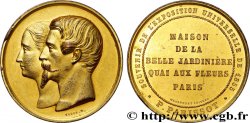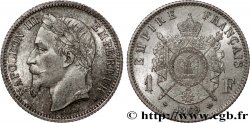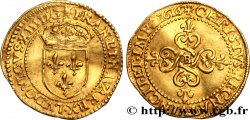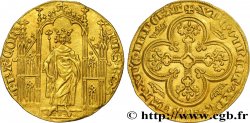Live auction - fmd_405061 - 5 francs or Napoléon III, tête nue, petit module, tranche cannelée 1854 Paris F.500A/1
You must signin and be an approved bidder to bid, LOGIN TO BID. Accounts are subject to approval and the approval process takes place within 48 hours. Do not wait until the day a sale closes to register. Clicking on "BID" constitutes acceptance of the terms of use of cgb.fr private live auctions.
Bids must be placed in whole Euro amounts only. The sale will start closing at the time stated on the item description; any bids received at the site after the closing time will not be executed. Transmission times may vary and bids could be rejected if you wait until the last second. For further information check the Live auction FAQ
All winning bids are subject to a 18% buyer’s fee.
All winning bids are subject to a 18% buyer’s fee.
| Estimate : | 500 € |
| Price : | 260 € |
| Maximum bid : | 270 € |
| End of the sale : | 27 September 2016 17:25:00 |
| bidders : | 2 bidders |
Type : 5 francs or Napoléon III, tête nue, petit module, tranche cannelée
Date: 1854
Mint name / Town : Paris
Quantity minted : 2870170
Metal : gold
Millesimal fineness : 900 ‰
Diameter : 14,36 mm
Orientation dies : 6 h.
Weight : 1,61 g.
Edge : cannelée
Rarity : R1
Slab

PCGS : MS62
Coments on the condition:
Sous coque PCGS MS62
Catalogue references :
Obverse
Obverse legend : NAPOLEON III - EMPEREUR.
Obverse description : Tête nue de Napoléon III à droite ; signé (levrette) BARRE (Mm) au-dessous.
Reverse
Reverse legend : EMPIRE FRANÇAIS// 5/ FRANCS/ 1854// A.
Reverse description : dans une couronne formée de deux branches de laurier.
Commentary
Ce type a toujours été rare car les pièces ont été largement refondues avant leur démonétisation, par le décret du 19 février 1859. Par décision ministérielle en date du 14 juillet 1855, la Banque de France a versé au change pour être refondues les pièces de 5 francs en or de 14 mm pour une valeur de 4.440.000 francs soit 888.000 pièces. Ce type avec la tranche cannelée a été émis suite au décret du 16 juillet 1854 alors que la fabrication avait débuté le 10 juillet pour se terminer le 30 décembre au terme de 123 délivrances. Pour ce type, la règle de six échantillons par délivrance a été maintenue alors que, depuis 1850, on utilisait pour l'argent la règle de huit échantillons par brève.







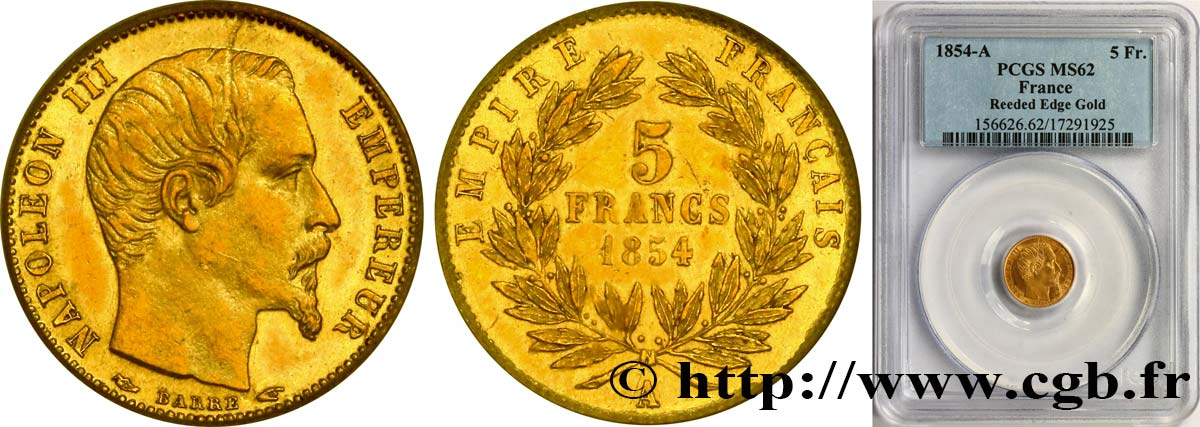
 Report a mistake
Report a mistake Print the page
Print the page Share my selection
Share my selection Ask a question
Ask a question Consign / sell
Consign / sell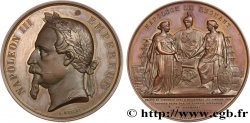
 Full data
Full data